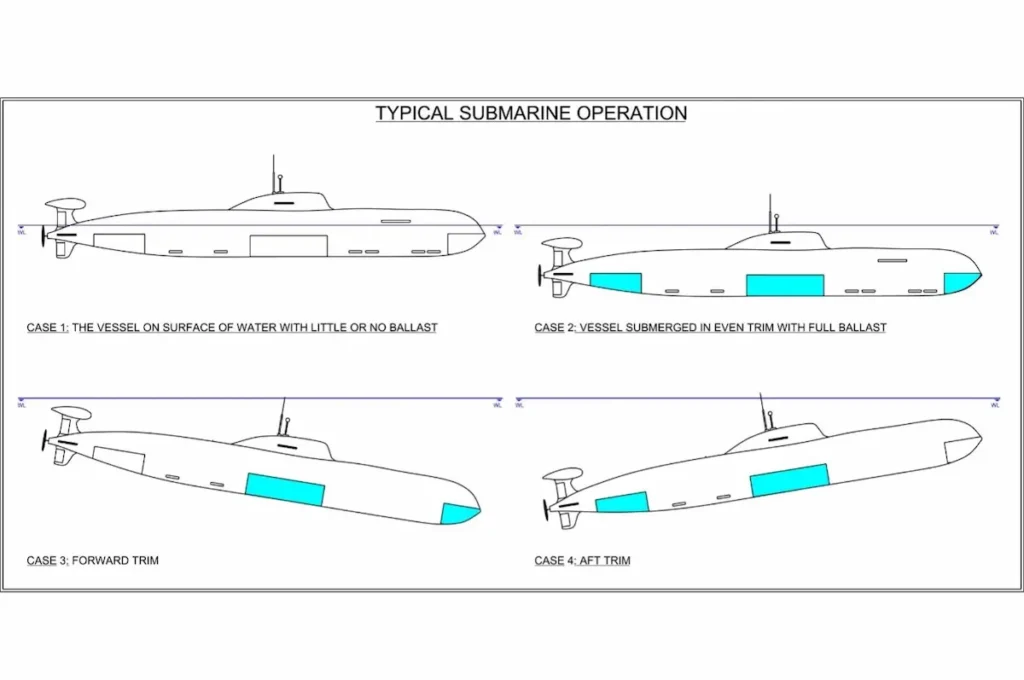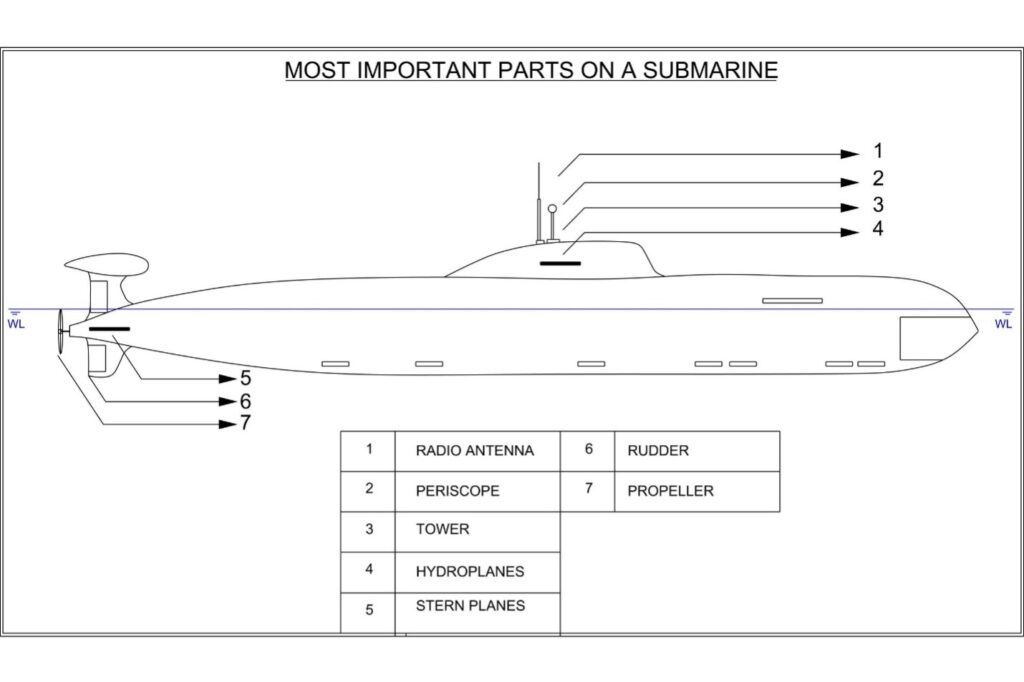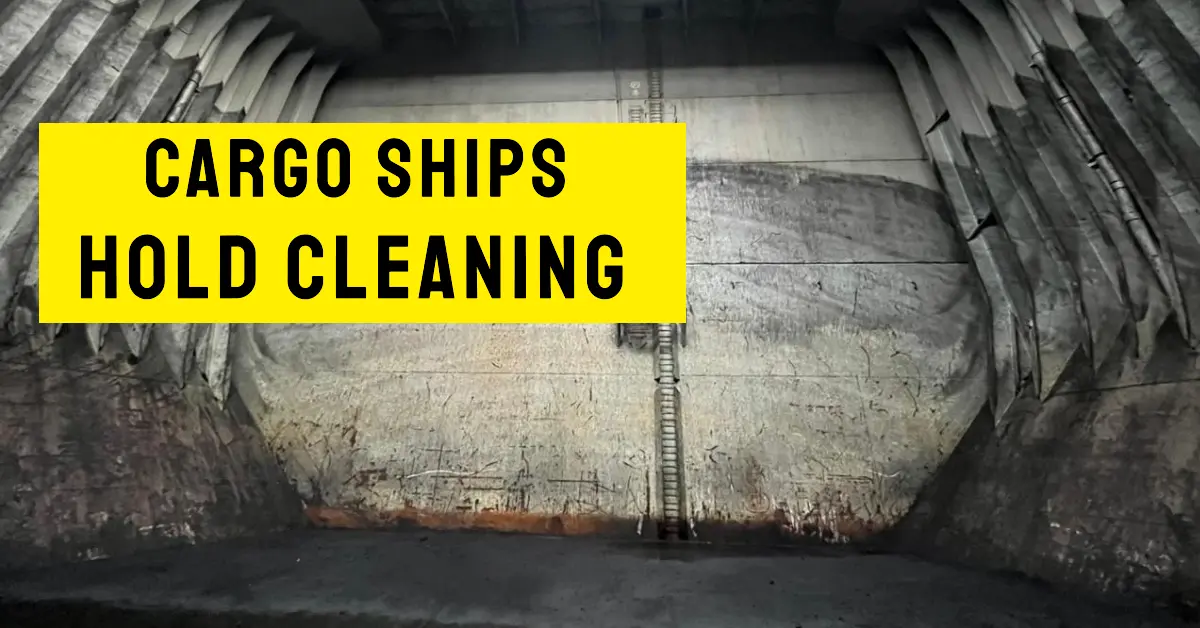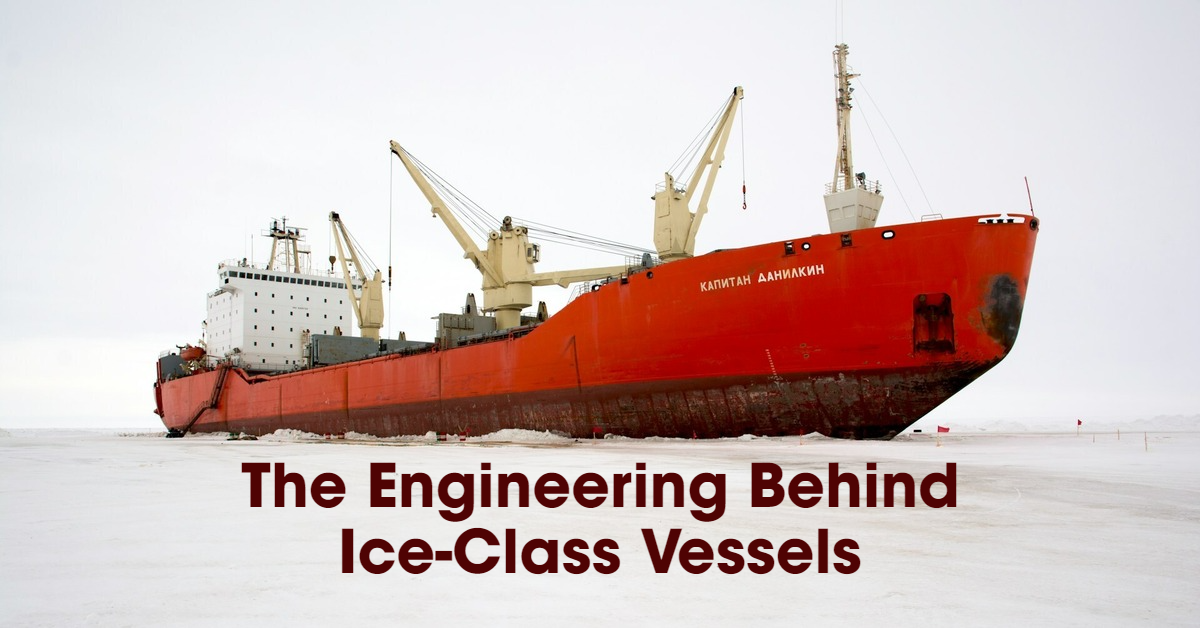The question of how submarines work might be like magic for the general public, no one can even imagine how a submarine that is so massive can perform the miracle of submerging and then rising to the surface again. So, what is a submarine?
A submarine, or “sub,” is a special kind of vessel that is built to operate both below and above the water surface and is capable of independent operations when submerged under the sea for extended periods. These vessels are primarily used for military operations, but it also has a strong scientific focus and can travel to depths that are inaccessible to humans.
This article will walk you through the various subtopics of submarines, including the history of submarines, how a submarine works, what are the different design principles behind submarines, and so on.
The History Of Submarines
The first person to construct a vessel that would sink in water was a German named Cornellis Drebbel, and his work served as the foundation for the history of the submarine. The vessel, which has a 4.5-meter depth, was constructed to resemble a rowing boat and was covered in leather.
David Bushnell, an American inventor who created submarines for use in the American War of Independence, came next. These submarines were being created with increasing frequency throughout time using steam, gasoline, and batteries.
The Working Principle Of Submarines
The buoyancy force is the first mode of operation for a submarine, and it serves to both float and sinks a submarine. When a submarine floats, it operates by displacing water that has a weight equivalent to that of the vessel itself. This displacement produces buoyancy and works to counteract the gravitational pull.
Trim tanks and primary ballast tanks are found on submarines. The submarine’s ballast tanks aid its descent into the water and ascent to the surface. The trim tanks are employed to maintain the submarine’s equilibrium. Every ballast tank has a valve on top and a hole at the bottom. The working principle, layout, and construction of ballast tanks on ships are completely different, if interested we have a separate article here.
The submarine floats because, with the valve closed, the ballast tank is filled with air (air is trapped inside), making it lighter than the water around it (like a ship). When the valve opens, saltwater flows into the ballast tank, forcing out the air. As the water fills the tank, the submarine becomes heavier than the water around it, causing it to sink.
Compressed air is fed through the valve to raise the submarine back to the surface. As the air fills the tank and displaces the water, the submarine rises to the surface. The submarine may also use the diving planes to move up and down when it is submerged.
The front and back trim tanks of the submarine are typically filled with water. It is set up so that water can be pumped from the rear trim tank to the front trim tank and vice versa. The water from the front trim tank is pumped into the rear trim tank to restore balance when the front trim tank becomes too heavy, which causes the submarine to sink.

Submarine Design
Modern submarines have an elliptical bow and stern with an extended cylindrical body in the middle. From a design perspective, this is not the best shape because it increases fuel expenses. However, the convenience and affordability of creating the submarine more than makes up for the higher fuel costs spent over the course of its lifetime.
Additionally, this design provides more room and makes it simple to build many decks. The length of a submarine is directly related to the cross-section diameter of the submarine. The usage of the hull volume is improved by dividing the pressure hull volume into many decks. The maximum number of decks that can be built depends on the submarine’s diameter.
Therefore, a single deck will have two levels that are accessible (below and above deck level); similarly, the design of submarines can have twin (two) decks, triple (three), or four decks.
There are some areas in a submarine that require a designed volume, such as ballast tanks, places for battery packs that are dependent on the size of the batteries, and inside may be numerous additional spaces that are dependent on the units that will be placed there.
The Most Important Parts Of A Submarine
The following are some of the most important parts of a submarine,
- Pressure hull
Modern submarines often have two hulls: an exterior hull and an interior pressure hull. The inner hull is known as the pressure hull because it is made to withstand the high hydrostatic pressure that a submarine experiences when submerging underwater to great depths. Battery packs, crew quarters, machinery, the control room for communications, weapons, and weapon control systems are all housed in the inner pressure hull.
The outer hull is enclosed by the pressure hull. The submarine’s ballast tanks and other tanks are located in the gap between the outer and inner hulls when it is submerged. Ballast tanks filled with seawater while the submarine is submerged underwater result in minimal hydrostatic pressure on the exterior shell. Tough steel or titanium is used to construct the hulls of submarines that require toughness.
- Tanks: Ballast & Trim
Between the outer and inner hulls, some spaces can be filled with either air or water. Along with the dive planes, some of these chambers are employed as ballast tanks, which aid in the submarine’s buoyancy management.
Ballast tanks are useful when diving into the ocean for the first time or while ascending to the surface after a dive. The size of the submarine determines how many ballast tanks are needed.
All depth and trim techniques are applied concurrently when a submarine performs emergency surfacing, along with lifting the vessel upward. Due to how quickly this surfacing occurs, the submarine may even partially spring out of the water, possibly causing damage to its systems.
- Hydroplane
Fin-like diving planes or hydroplanes are found on submarines. The wings and the control features of an aircraft that aids in producing an upward push are somewhat similar to those of diving fins.
The ability of the diving planes to tilt allows the submarine to vary its “lift,” enabling it to ascend or descend to great depths. The majority of the time, dive planes are used to control the submarine’s depth. The tilt angle of the planes and the submarine’s speed both affect how much lift the submarine produces.
Rolling and pitching are controlled using hydroplanes. When moving, the two hydroplanes on the aft are used to change the submarine’s lateral (side) direction. Rudders are another name for these hydroplanes.
- Tower
Earlier submarines used the tower to house the periscope, radar, communications center, etc. Today’s submarines have moved the majority of these to the hull.
The tower serves as a vertical stabilizer for the submarine when it is submerged. In modern submarines, the tower is employed as a viewing platform when it is above the water’s surface and some are also designed to support the hydroplanes
- Power supply
Submarines are outfitted with diesel engines that burn fuel and/or nuclear reactors that employ nuclear fission to provide this power. Batteries are used by submarines to power their electrical systems. Batteries are frequently used to power electrical devices, and electricity from a diesel engine or nuclear reactor is utilized to charge the batteries. The batteries may be the only source of electrical power for the submarine in emergencies.
Most hybrid submarines have diesel engines that can power generators that recharge a huge battery bank or propellers. Alternately, they can operate in tandem, with one engine powering a generator and the other a propeller.
To use the diesel engines, the sub must surface (or use a snorkel to cruise close below the surface). The sub can enter the water after the batteries are fully charged. Electric motors operating the propellers are powered by batteries.
The only way a diesel sub can submerge is through battery operation. The duration a diesel sub can stay submerged is greatly limited by the limitations of battery technology. Because of these battery restrictions, it was realized that using nuclear power in a submarine had many advantages.
A nuclear submarine may spend weeks submerged since its nuclear generators don’t require oxygen. Additionally, a nuclear submarine may stay at sea for a longer period because nuclear fuel has a significantly longer shelf life than diesel fuel (years).
- Communication & Navigation
The primary means of communication with the outside world or their command is challenging for submarines traveling deep beneath the ocean. Except for VLF, no radio wave can go across salt water. VLF (very low frequencies, 3 to 30 kHz) can reach a depth of 20 meters in saltwater.
Large VLF transmitters are used by nations with submarines to communicate with them. One significant drawback of VLF is that it cannot transmit real-time audio signals due to its extremely low bandwidth. A VLF can only text at a speed of 700 words per minute at most.
In terms of navigation, Periscopes are found on submarines (a periscope is an arrangement of the tube with mirrors or prisms to enable an observer to view objects that are otherwise not visible). However, they are only helpful when the submarine is at or very near the surface.
Since GPS and radar operate on high-frequency waves that cannot travel through seawater, they cannot be used underwater.
Accelerometers and gyroscopes are part of the inertia navigation system used by submarines. This system tracks a submarine’s movements about an earlier reference by using its most recent accurate GPS position as a starting point. The accuracy of this technique declines, though, as the latest GPS position becomes older. The usage of the map as an additional tool will help this strategy.
They also use SONAR to map out or understand their surroundings by producing a small sound and then listening for or detecting when the sound is reflected. However, the submarine’s sound makes it simple for other ships or submarines to locate it. Therefore, when the submarine is on a covert mission, it is dangerous to employ active Sonar.

What Are The Main Life Support Systems On A Submarine?
The main issues with life support in a submarine’s enclosed environment are maintaining high levels of air quality, preserving the temperature & undisturbed supply of fresh water. Let us get into more detail about each of these aspects.
- Air Quality
A pressurized tank or an oxygen generator (which can create oxygen from the electrolysis of water), is normally found onboard submarines. A computerized system that monitors the amount of oxygen in the air either releases oxygen continuously or releases it in batches at set intervals throughout the day.
In equipment known as scrubbers, soda lime (sodium hydroxide and calcium hydroxide) can be used to chemically remove carbon dioxide from the air. A chemical reaction traps the carbon dioxide in the soda lime, removing it from the air. The same effect can be achieved by other comparable reactions.
A dehumidifier or chemicals might be used to get rid of the moisture. As a result, it doesn’t settle on the ship’s bulkheads, interior walls or machinery.
Burners can also be used to eliminate other gases like carbon monoxide or hydrogen that are produced by machinery or cigarette smoke. To clear the air of particles, filth, and dust, filters are utilized.
- Upkeep of Fresh Water Supply
The distillation equipment found on most submarines can take in seawater and generate fresh water. The seawater is heated in the distillation plant to water vapor, where the salts are removed, and the water vapor is then cooled into a freshwater collection tank. This water is mostly utilized to keep crew members and to cool down electronic devices.
- Preserving the temperature
To keep the crew comfortable, submarines must be electrically heated. The nuclear reactor, diesel engine, or batteries provide the heaters’ electrical power (emergency).
Internal heat is transferred to the surrounding water via the submarine’s metal.
The Evolution of Submarine Technology
In the early days of submarine development, the vessels were rudimentary and primarily used for warfare. Over time, improvements in technology have significantly changed the design, functionality, and purpose of submarines.
Early submarines had a limited range and could only remain underwater for a short period. The propulsion was often provided by human muscle power or combustion engines, which required the submarine to surface regularly for oxygen.
The advent of nuclear power dramatically altered the submarine landscape. Nuclear-powered submarines, such as those introduced in the 1950s, could stay submerged for months. These vessels utilized nuclear reactors for power, eliminating the need for oxygen intake. This innovation significantly enhanced their strategic value, as it increased their stealth capabilities.
Advancements in communication and navigation systems have also been paramount. The use of SONAR (Sound Navigation and Ranging), for example, has been a significant leap. It allows submarines to map the underwater environment, detect other vessels, and navigate in the deep sea where GPS signals can’t penetrate.
Modern submarines are equipped with cutting-edge technology such as high-capacity batteries, advanced sonar systems, automated control systems, and even AI-driven technologies for improved functionality and efficiency.
The Challenges and Future Prospects of Submarine Operations
Despite technological advancements, submarines face numerous challenges. Operating in harsh underwater conditions is inherently risky, and the technology used must be capable of withstanding high-pressure and corrosive seawater. Submarines must also remain undetectable to enemy forces while maintaining communication with command centers, a complex balancing act.
Maintenance and upgrading of submarine technology present another set of challenges. Due to their intricate design and construction, submarines require highly specialized knowledge and tools for their upkeep.
In terms of future prospects, technology is opening up exciting avenues for submarine operations. AI and robotics hold immense potential in enhancing the capabilities of submarines. Unmanned Underwater Vehicles (UUVs) are already in use for tasks such as seabed mapping and surveillance.
New energy sources, like fuel cells or advanced batteries, could further enhance the endurance and efficiency of non-nuclear submarines. Stealth technology advancements will continue to make submarines harder to detect, thus increasing their strategic value.
Moreover, while submarines are primarily seen as military vessels, there are potential civilian uses such as deep-sea exploration, underwater tourism, and marine research that could be realized in the future.
Summary
Submarines are vessels that use one of the most advanced technologies to operate safely below the water’s surface. They are designed solely for delivering a mission and also ensuring the safety of the crew on board.
- Comprehensive Guide to Hold Cleaning for Cargo Ships: Ensuring Maritime Safety and Efficiency – October 19, 2024
- Responsibilities of a Fourth Engineer on Cargo Ships – September 10, 2024
- The Role of Cargo Ships in Global Trade – August 22, 2024




